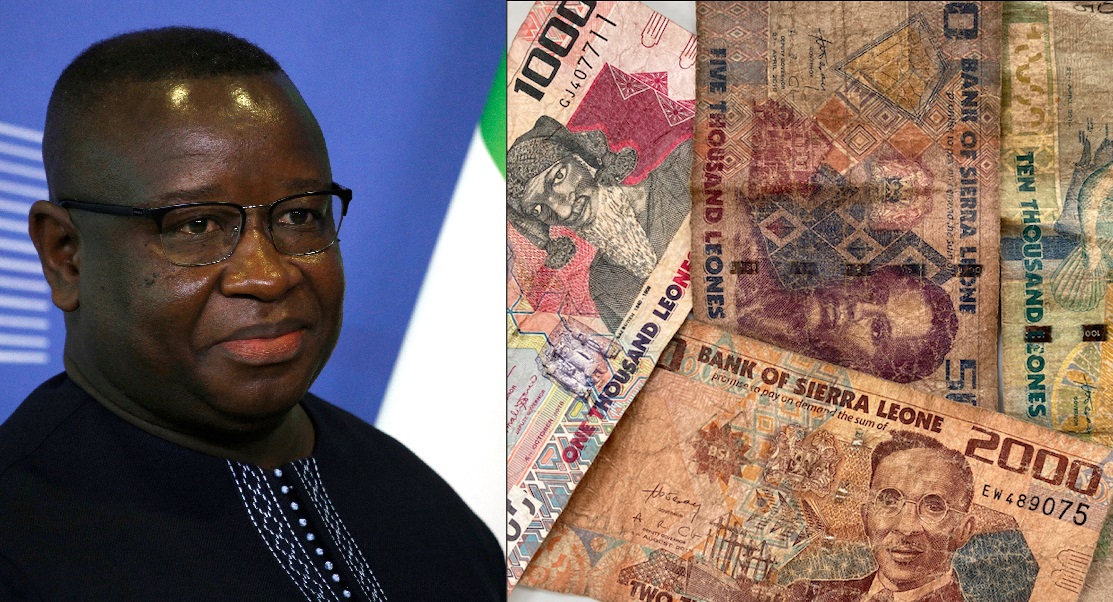Let me first start by saying that this article is not meant to discredit or in any way challenge what the Government plans to do with redenominating the Leones. The Government of Sierra Leone has brilliant economists and central bankers who advise the executive on these matters. The government’s decision is therefore assumed to be well advised and appropriate for the reasons provided.
Notwithstanding, when countries are preparing to make changes that could potentially have high impact on the economy and savings of the people, it is important for the public to consider the changes at hand and scrutinise them under a critical lens. Perhaps, just like the wise men and magicians of Pharaoh could not interpret his dreams, there is always a possibility that Government advisers could miss out on something or overlook something without knowing. This is always a possibility.
I am very active in social media, and it baffles me that I do not see many members of the public engaging in this issue. Perhaps they assume that it will have no impact in their lives; to them life will continue as normal. That is possible also, but what if there could be an effect (both good or bad) on the economy and people’s savings in the medium (5 years) to the long term (10+ years). To see what is possible with this kind of policy change, we can look at Ghana who went through the same process in 2007.
Effective 1st July 2007, the central bank of Ghana redenominated its currency by removing four zero’s from its note; such that Ten Thousand Cedi’s (10,000) would be equivalent to One cedi (1). The implication of this was that one (1) NEW Ghana Cedi would be equal to approximately one (1) Us Dollar. Let us see how this has changed over the last fourteen (14) years.
Let us put this into perspective. Before the redenomination of the currency in 2007 one US$ was exchanging for the Ghanaian Cedi at 10,000. The currency was redenominated to one USD exchanging for the Ghanaian Cedi at 1. Today the US$ is exchanging for the new Ghanaian Cedi at US$ 6. The is means that over the last 14 years after redenomination of the Ghanaian Cedi, it has lost 83% of its value in terms of purchasing power.
To put it in simpler terms, if on the 1st of July 2007 you had 100 New Ghana Cedi’s, you could exchange them and get US$ 100. If you kept that 100 Ghana Cedi’s in your drawer and removed it today and exchanged it for the US$, you will only get US$ 16. US$100 is now US$ 16 after the currency losing its value over the years. This does not imply that the economy of Ghana has been declining since 2007, in fact they have seen considerable growth over the period from a gross domestic product (GDP) of US$ 24.8 billion in 2007 to US$ 72.3 billion in 2020. That is tremendous growth for their economy (see chart below).
Why is it important for us to think about this and to look at the Ghana example? The reason is because, if this was to happen, (there is no reason why it could not considering that Ghana has a stronger economy than Sierra Leone), there would be serious economic implications in the near term (5 to 10 years). After the redenomination of the Leones, one US$ will be exchanging for approximately Ten (10) Leones. If the Leones was to experience the same devaluation experienced by the Ghana Cedi (from 2007 to 2021) over the next Ten (10) years, the Leones in 2031 will be exchanging for One (1) US$ for Sixty (60) Leones.
In most situations, it is easy to adopt to the day-to-day change of a currencies value. It goes unnoticeable, but in the long term, it can lead to significant erosion of capital. This is dangerous especially for businesses that operate with a long-term investment perspective and for pension or social security funds.
For example, let us look at a person called Mr Kamara who is 50 years of Age today. Mr Kamara has been working for the last 20 years with the Government and several NGO’s and has successfully managed to contribute Leones Fifty Million (50,000,000) with NASSIT over the 20 years. On the 1st of December 2021, NASSIT issues a new statement to Mr Kamara advising him that his new contribution amount is now SLL 50,000 after the redenomination of the Leones. Mr Kamara does his quick calculation and finds out that this is the equivalent of US$ 5,000; one US$ is equivalent to Ten (10) leones after the redenomination. Mr Kamara is happy.
It is 2031 and ten years have passed and the Leones, just like the Ghana Cedi has depreciated in value. One US$ is now exchanging for 50 Leones. Mr Kamara has now reached the statutory retirement age of 60 years and is ready to start taking his NASSIT pension. He goes to NASSIT with his old statement issued in 2021 (he has not been contributing since then). NASSIT confirms that his contribution amount is still the same SLL 50,000. He is happy and is now ready to collect his pension. Just like before, he decides to check the dollar value. He finds out that now one US$ is exchanging for 50 Leones and this makes his contribution worth US$ 1,000.
From the basic example above, the Value of Mr Kamara’s contribution of SLL 50,000,000 (old leones), SLL 50,000 (new Leones), will have moved from US$ 5,000 to US$ 1,000. Mr Kamara’s pension has lost 80% of his purchasing power. His 50,000 contribution could have bought him a good Belgium taxi but now it can only buy him an Okada. This is what happens when the value of a currency is eroded and this principle can be applied to personal savings, long term business capital, etc.
Am I saying that this will happen? NO. But it is a possibility that the Government should look into, and the public should ponder on when they are discussing the issue. NASSIT should be isolated in this discussion / consideration because it is the national pension scheme. They should be asked, what are they planning to do to protect the purchasing power of our pensions. NASSIT should do a TV and Radio presentation to explain to the public what their plans for hedging currency devaluation is and give the public the comfort they need.
The bigger challenge remains growing a strong and robust economy and increasing the foreign direct investment into the economy. An economy that exports more and one that is friendly to manufacturing and value addition. This is the only thing that will protect the devaluation of the currency.
Undoubtedly, the Government has good intentions with the redenomination of the currency. But still, this critical economic policy shift deserves an extra critical eye, especially by the public, who will have to live with the consequences (good or bad). Governments will come and go, but Salone, nar we all get am.



 Post a comment
Post a comment 









